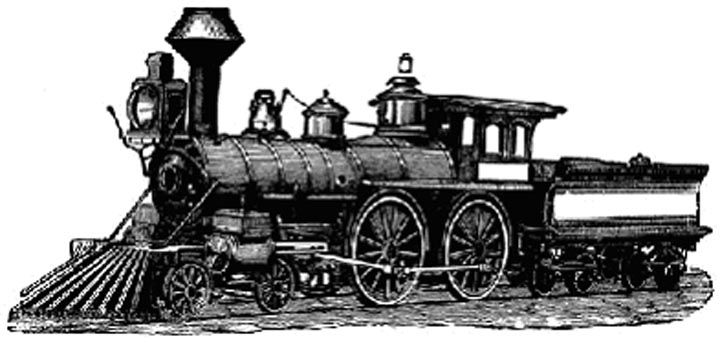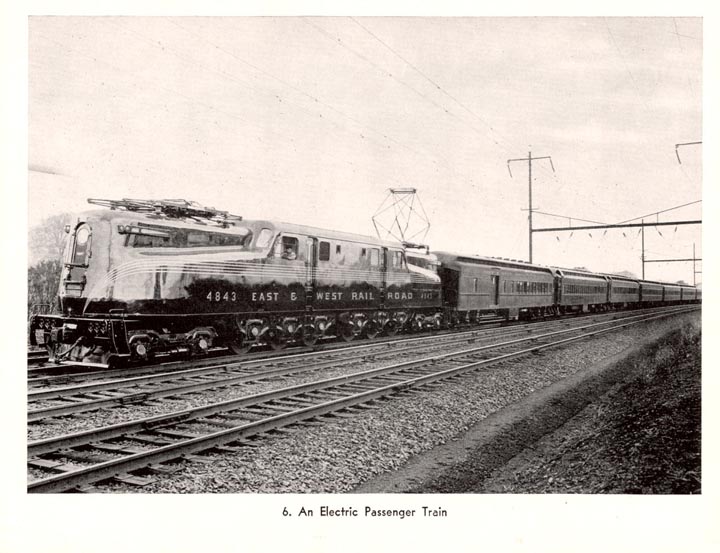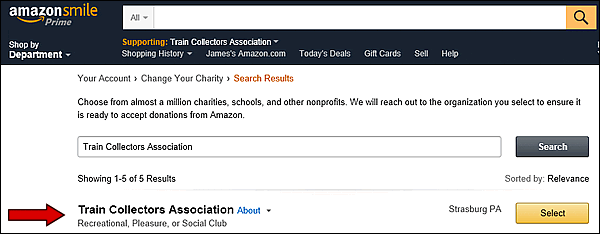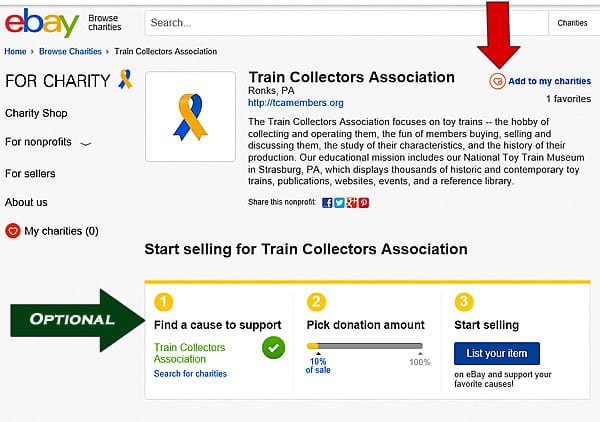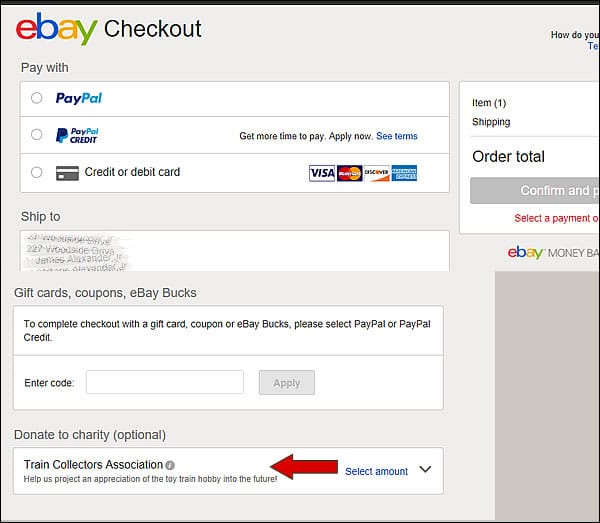Association of American Railroads Teacher’s Kit – Part VI
Presented by Bill Fuller
In the early 1940s, the Association of American Railroads (AAR) offered a Teacher’s Kit for use in teaching public school students about the transportation industry. Of course, in the mind of the AAR, transportation equaled railroads, and the kit includes over 50 photographs of railroad scenes. Each photograph is accompanied by a descriptive story, each of which becomes a short history lesson in the place of railroading in American culture and economy. A complete copy of the original kit is in the archives of the High Plains Western Heritage Center, Spearfish, South Dakota. Its contents have been scanned and reprinted for public viewing in the Heritage Center by TCA member Bill Fuller, who has also provided a copy to e*Train. Each new issue will feature one of the photographs and its story
The “East and West Railroad” or “E & W” shown in the photographs never existed. Actual railroad names were replaced in the photographs probably to avoid the appearance of giving free advertising to some railroad lines while slighting others.
What is the Association of American Railroads?
The 1941 – 1943 Teacher’s Kit containing these photographs and descriptive text was published by the Association of American Railroads (AAR). The following information about this organization is quoted from former AAR Web sites http://www.aar.org/About_AAR/aar_history.asp and http://www.aar.org/About_AAR/about_aar.asp, retrieved November 23, 2004. ARR subsequently amended these sites, and a revised history can now be found at http://www.aar.org/AboutAAR/AAR%20History.aspx.
The AAR was formed in 1934. But its history really goes back much further–all the way to 1867 when the Master Car Builders Association was formed to conduct experiments aimed at standardizing freight cars.
Soon other organizations representing other railroad subjects were formed. By the early 1930s, there was an alphabet soup of organizations representing the industry. Included were the Association of Railway Executives, the American Railway Association, the Bureau of Railway Economics, the Railway Treasury Officers Association, the Railway Accounting Officers Association and the Bureau for the Safe Transportation of Explosives and other Dangerous Articles. These and others were folded into the new Association of American Railroads, when it was established on October 12, 1934.
The unification of rail associations was a fallout from the Great Depression. In 1933 the Rail Transportation Act was passed and a Federal Coordinator of Transportation was appointed to deal with depression-era problems affecting railroads. Beset by a plethora of voices representing the railroad industry, Coordinator Joseph B. Eastman – with the support of President Franklin D. Roosevelt – soon recommended that railroads unify into one organization that could speak for the entire industry, leading directly to creation of the AAR.
AAR members include the major freight railroads in the United States, Canada and Mexico, as well as Amtrak. Based in Washington, DC, the AAR is committed to keeping the railroads of North America safe, fast, efficient, clean, and technologically advanced. Much of the AAR focus is on Washington, bringing critical rail-related issues to the attention of Congressional and government leaders.
The AAR is also very much involved in programs to improve the efficiency, safety and service of the railroad industry. Two AAR subsidiaries – the Transportation Technology Center, Inc., and Railinc – ensure that railroads remain on the cutting edge of transportation and information technology.
Railroads are the vital link to our economic future. More than 40 percent of all US freight moves by rail – more than from any other single mode of transportation. As Fortune Magazine recently observed, “While Internet companies scramble for sound business footing, many of America’s trains are running on Internet time – at a profit.”
© 2004 AAR 50 F Street, NW, Washington, DC 20001-1564 •• 202-639-2100
Used with permission”
Story # 6-An Electric Passenger Train
On many railroads electric locomotives as well as steam locomotives are used for hauling trains and for switching cars. The electric locomotive is very strong. IT can pull heavy trains over steep mountain grades. It can run forward or backward with equal facility, thus eliminating the time and expense of having to be turned around at the end of each run. It can pick up and reduce speed rapidly.
Electric locomotives are sometimes used for heavy freight and passenger service in mountainous regions, for switching service in metropolitan areas, and for passenger service in highly developed, high traffic density zones where rapid acceleration and high speeds are essential and where station stops are frequent. They are also sometimes used for pulling trains through long tunnels.
An electric locomotive in good condition is ready for instant service. There is no fire to build or steam to generate before it starts on its run. As will be noted from the picture, the electric locomotive differs in appearance from the steam locomotive. For one thing, its driving wheels are smaller. It has no smokestack. Its bell is usually concealed. Electric locomotives are equipped with horns for sounding warnings or sending signals. In some electric locomotives the engineer has two control rooms, one for use when the engine is going in one direction and the other for use in driving the engine in the opposite direction. Within his reach when he is seated are many switches, gauges and controls which enable him to keep the engine running properly.
The engineer’s helper (corresponding to the fireman on a steam locomotive) sits on the opposite side of the room, or cab, and helps the engineer operate the train and look after the motors.
Railroad electrification is of two kinds—(1) overhead power wires, as shown in the picture, and (2) third rail construction. In either case, there must be a point of contact between the wire or rail that supplies the current and the locomotive. With overhead electrification, a pantagraph, or hinged framework which can be folded down on the roof, is attached to the locomotive or motor car. On top of the pantagraph, as can be seen in this picture, there is a metal “shoe” which runs along the copper wire to carry the current into the motor by means of relays and switches.
The method of picking up electrical current from a third rail, which is usually located just outside the wheel rail, is similar to the overhead wire system except that the metal “shoe” hangs down from the side of the locomotive or motor car and slides along the third rail.
Electricity to run the trains comes from power houses, sometimes located long distances from the railroad.
The electric locomotive was invented by Thomas A. Edison. Mr. Edison built a small experimental model in 1880 and tried it out on a specifically built track at Menlo Park, New Jersey. The first electric locomotive operated regularly on an American railroad was placed in service at Baltimore in 1895. Today there are hundreds of electric locomotives in operation in the United States.
In addition, several railroads operate electric motor cars in suburban passenger train service to and from metropolitan centers. These cars draw their current either from third rails or from overhead power distributing systems, or catenary wires, similar to those shown in the picture. Electric motor cars are usually operated in units of two, four, six, eight or ten cars, every other car being equipped with electric motors, somewhat similar to an electric street car. (The interior of each electric motor is fully occupied by seats for passengers, as the motor equipment is located beneath the car floor.)
The second car of a two-car unit is known as a trailer. Although it has no power unit and cannot therefore be operated independently, it is equipped with control mechanism connected with the motor car to which it is attached and other motor cars in the train, so that the train can be operated by a motorman located in the trailer car.
The man who runs a steam or electric locomotive is called a locomotive engineer or engineman, while the man who runs an electric motor car train is called a motorman.

